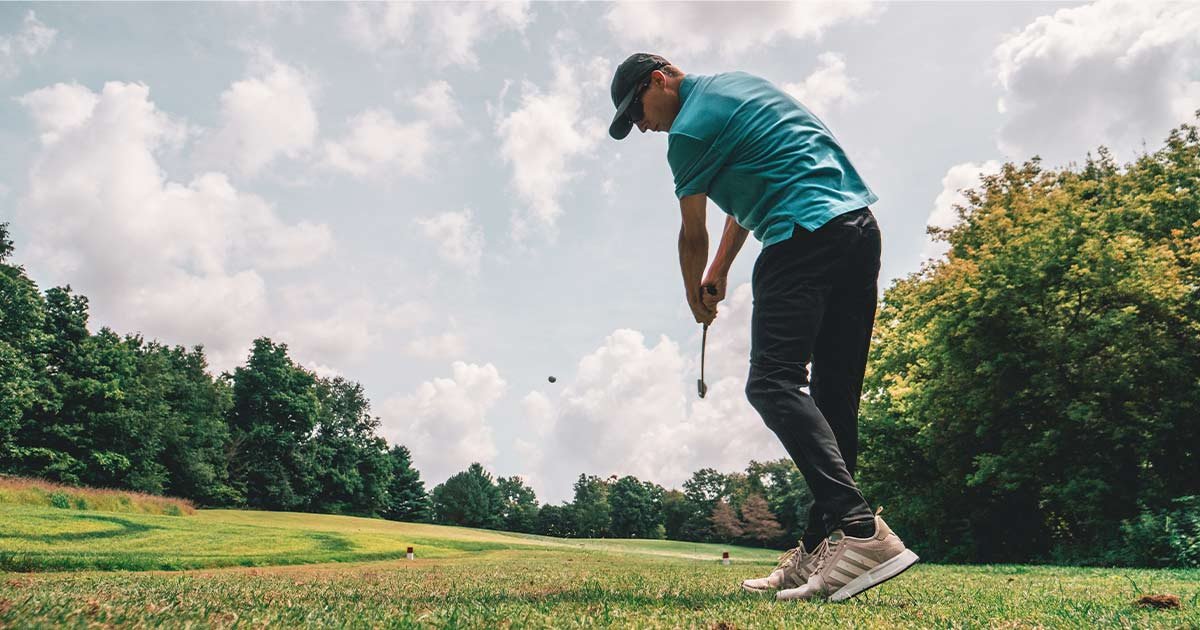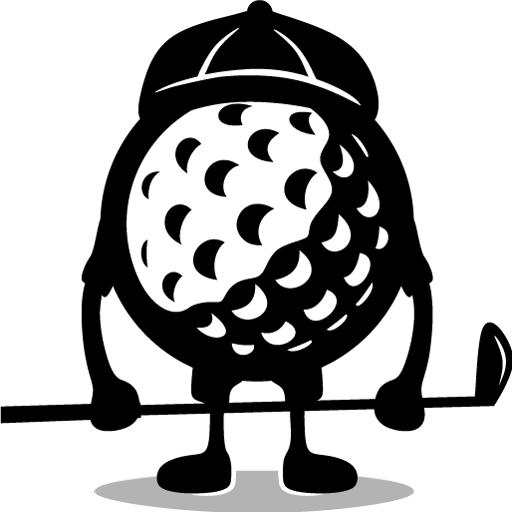Have you ever been out on the course and needed to hit a curved shot around an obstacle? If that sounds like you, you know how difficult it is to hit the ball with the proper amount of force and wrist action for the curve to occur. Throughout my 40+ years on the greens, I’ve been humbled by this shot more times than I can count.
One problem that happens to many golfers attempting a curved shot is the dreaded double cross. A double cross occurs when a golfer wants to hit the ball in one direction but hits it in the opposite trajectory due to a lack of control.
Let’s take a deep dive into the double cross and explain what causes it. After that, I’ll give you some pointers so you can prevent double crosses in your next golf game!
The Double Cross in Golf
When golfers talk about curved shots, they are referring to fades and hooks. For a right-handed golfer, a hook is a shot that curves from right to left, while a fade will curve in the opposite direction. For a left-handed golfer, a hook shot curves from left to right, with the opposite motion for a fade.
So, a double-cross is when a golfer means to hit a hook but ends up hitting a fade (or vice-versa). As you can tell, double crosses create a headache for any golfer, whether they’re an experienced golf pro or a novice.
Preventing a double cross is one of the primary aims of any golfer who struggles with accuracy. Since accuracy is the most vital element of any golfer’s game, it’s essential you know why double crosses occur and how to prevent them.

Why Do Double Cross Shots Happen?
If you’re hitting a lot of double crosses, you need to work on a few elements of your game. The three primary problems you need to work on are:
- Wrist action
- Clubface position
- Mental game
The primary cause of a double cross is your mental game. When you focus too much on where you don’t want the ball to travel, you can lose focus on what action you need to take. So, instead of releasing your wrist at the right moment, you release them too early or too late.
When you release your wrists too early or too late on your swing, you won’t hit the ball the same way. In most cases, badly-timed wrist rotation will cause the ball to move in the opposite direction than you planned.
If you have the clubface in the wrong position, you’ll create an even larger curve. When you release your wrist rotation at the wrong time, you leave the clubface more open or closed.
Ideal Clubface Position and Wrist Action
When you want to hit a hook or fade shot, you can help yourself by positioning your clubface the right way and using the proper wrist action. Let’s go through the different ways to do this for both left and right-handed golfers.
Right-Handed Golfer
If a right-handed golfer wants to hit a hook, they need to have:
- Early wrist rotation
- A closed clubface
- The ball closer to their back foot
If a right-handed golfer wants to hit a fade, they need to have:
- Late or no wrist rotation
- An open clubface
- The ball closer to their front foot
Left-Handed Golfer
If a left-handed golfer wants to hit a hook, they need to have:
- Early wrist rotation
- A closed clubface
- The ball closer to their back foot
If a left-handed golfer wants to hit a fade, they need to:
- Late or no wrist rotation
- An open clubface
- The ball closer to their front foot
How to Prevent a Double Cross
Preventing a double cross takes mental willpower more than anything. By honing your psychological and cognitive abilities, you’ll be able to control your wrist rotation and clubface position.
The first thing to remember is to focus on where you want to hit the ball. You need to trust your own abilities to steer the ball in the proper direction. Even though this sounds like wishful thinking, thinking about which way you want to hit the ball will help put you at ease.
The second thing you need to do is maintain your wrists as if you were taking a regular shot. This helps you not overcompensate with wrist action. When you overcompensate, you’ll often time your wrist action improperly, which causes a double cross.
Once you can maintain your wrist rotation, you can work on timing that wrist rotation properly. Remember, for a right-handed golfer, an early release causes the golf face to close, resulting in a hook. A late release causes a fade.
You can also position the ball differently in your stance. If a right-handed golfer wants to hit a hook, they can position the ball four to six inches closer to their back foot. This causes the clubface to close when impacting the ball, which causes a hook.
When a golfer positions the ball closer to their front foot, the ball will fade. If you’re a left-handed golfer, remember that fades and hooks curve the opposite direction as right-handed golfers. The instructions here remain the same, though.
To practice these steps, I recommend going out to your local driving range and purchasing a big bucket of balls. That way, you can work on these methods one at a time. Start by improving your wrist release, and then practice hitting hooks and fades.
Conclusion
Double crosses are a part of golf, but that doesn’t mean you need to live with them! By focusing on your mental game and wrist action, you can do your best to prevent a double cross from ruining your score.
The best way to prevent double crosses is to practice your hooks and fades. Once you have these down, the chances of you hitting a double cross diminish quickly.
So what are you waiting for? It’s time to get out on the driving range so you can practice these shots. You’ll see an improvement in your game almost immediately!
